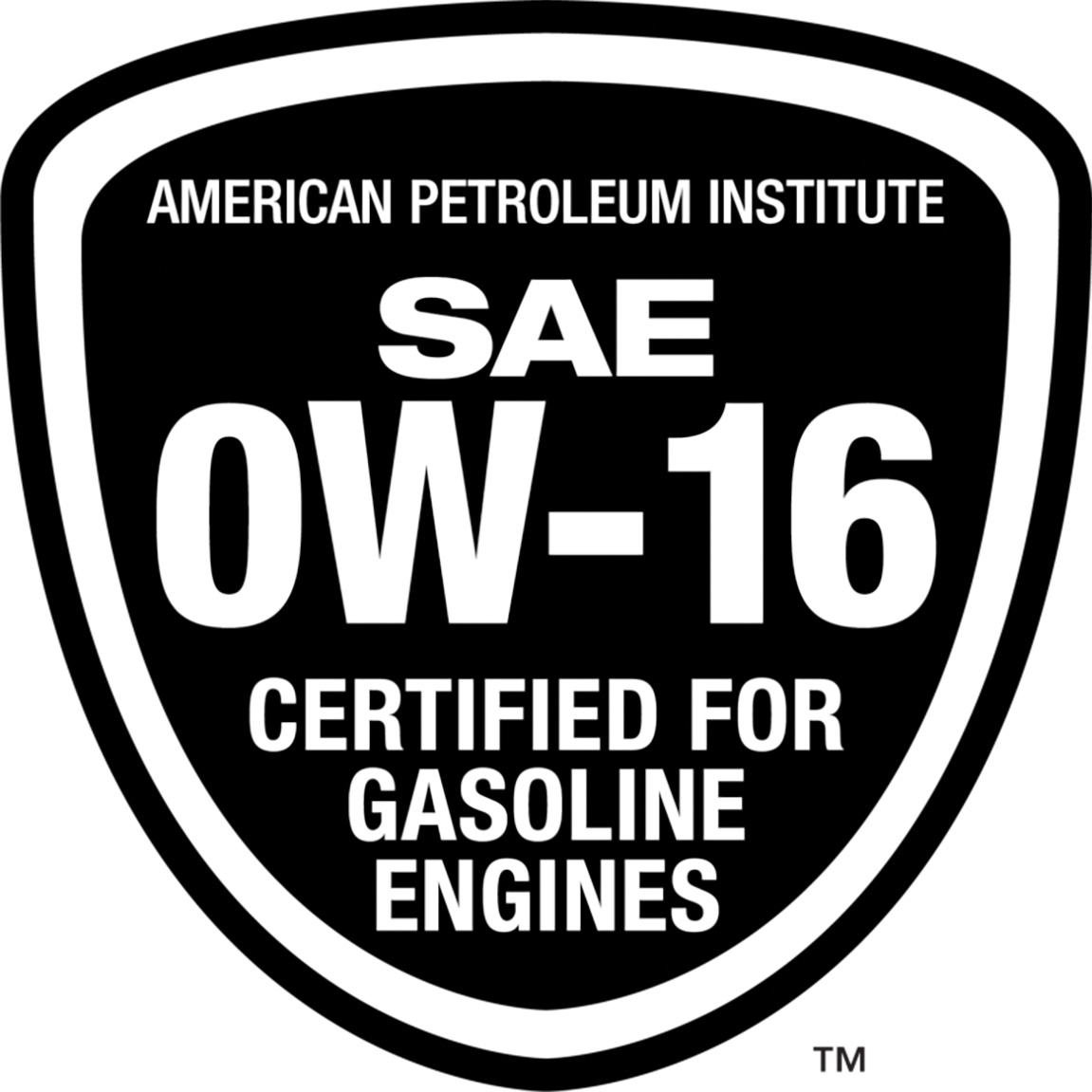
Find your Country and language
Lubricants Beyond Today's Standards TM
Petro-Canada™ Lubricants' distribution network extends to over 80 countries worldwide
The earliest attempts to classify and identify motor oils were made when the first automobiles appeared. Even then, the physical property viscosity was known to be one of the most important characteristics of an oil and oils were classified as light, medium, or heavy, depending on their viscosity. When calibrated instruments became available to accurately measure viscosity, the Society of Automotive Engineers (SAE) developed a classification system based on viscosity measurements. This system (Engine Oil Viscosity Classification – SAE J300), which has been modified over the years, establishes fifteen distinct motor oil viscosity classifications or grades, as shown in the table on the following page.
| SAE VISCOSITY GRADES FOR ENGINE OILS (SAE J300 April 2021) | |||||
|---|---|---|---|---|---|
| SAE Viscosity Grade |
Low-Temperature (°C) Cranking Viscosity(3), mPa·s Max |
Low-Temperature (°C) Pumping Viscosity(4), mPa·s Max with No Yield Stress(4) |
Low-Shear- Rate Kinematic Viscosity(5) (mm2/s) at 100 oC Min |
Low-Shear- Rate Kinematic Viscosity(5) (mm2/s) at 100 oC Max |
High-Shear- Rate Viscosity(6) (mPa·s) at 150 oC Min |
| 0W | 6 200 at -35 | 60 000 at -40 | 3.8 |
- | - |
| 5W | 6 600 at -30 | 60 000 at -35 | 3.8 | - | - |
| 10W | 7 000 at -25 | 60 000 at -30 | 4.1 | - | - |
| 15W | 7 000 at -20 | 60 000 at -25 | 5.6 | - | - |
| 20W | 9 500 at -15 | 60 000 at -20 | 5.6 | - | - |
| 25W | 13 000 at -10 | 60 000 at -15 | 9.3 | - | - |
| 8 | - | - | 4.0 | <6.1 |
1.7 |
| 12 | - | - | 5.0 | <7.1 | 2.0 |
| 16 | - | - | 6.1 | <8.2 | 2.3 |
| 20 | - | - | 6.9 | <9.3 | 2.6 |
| 30 | - | - | 9.3 | <12.5 | 2.9 |
| 40 | - | - | 12.5 | <16.3 | 3.5 (0W-40, 5W-40, and 10W-40 grades) |
| 40 | - | - | 12.5 | <16.3 | 3.7 (15W-40, 20W-40, 25W-40, 40 grades) |
| 50 | - | - | 16.3 | <21.9 | 3.7 |
| 60 | - | - | 21.9 | <26.1 | 3.7 |
Notes:
1. 1 mPa·s = 1cP; 1 mm2/s = 1 cSt.
2. All values, with the exception of the low-temperature cranking viscosity, are critical specifications as defined by ASTM D3244.
3. ASTM D5293: Cranking viscosity - The non-critical specification protocol in ASTM D3244 shall be applied with a P value of 0.95.
4. ASTM D4684: Note that the presence of any yield stress detectable by this method constitutes a failure regardless of viscosity.
5. ASTM D445 or ASTM D7042 bias corrected to ASTM D445.
6. ASTM D4683, ASTM D4741, ASTM D5481, or CEC L-36-90.
The “W” following the SAE viscosity grade stands for “winter” and indicates that an oil is suitable for use in colder temperatures. Oils carrying the “W” designation must have the proper viscosity value when measured at appropriate low temperatures. Those SAE classifications which do not include the “W” define oil grades for use at higher temperatures. The viscosity of these oils – SAE 8, 12, 16, 20, 30, 40, 50 and 60 – must have the proper value when measured at 100°C and under high shear conditions at 150°C. As noted earlier, the development of viscosity index improvers made the manufacture of multi-graded motor oil possible. Many of these oils - SAE 0W-20, 0W-30, 0W-40, 5W-20, 5W-30, 5W-40, 10W-30, 10W-40, 15W-40 and 20W-50 - have been marketed for decades in North America. The most recent lower viscosity grades (SAE XW-8, XW-12, XW-16) will become more popular in the near future as the engine manufacturers modify their engines to utilize them to maximize fuel economy.
Multigrade motor oils are widely used because they are light enough for easy cranking at low temperatures, but heavy enough to perform satisfactorily at high temperatures as well.
The engine manufacturers’ recommendations for oil viscosity remain the primary references, particularly if warranty coverages are in force. However, a basic guide prepared from owners’ manuals is shown in the table below:
| GUIDE TO SAE GRADES OF ENGINE OIL | ||
|---|---|---|
| Ambient Temperature Range | SAE Multi-Grades | SAE Grade |
| °C | °F | |
| –40°C to +40°C | –40°F to +104°F | 0W-8 and 0W-16 |
| –40°C to +40°C | –40°F to +104°F | 0W-20 and 0W-30 |
| –35°C to +40°C | –31°F to +104°F | 5W-20 and 5W-30 |
| –30°C to excess of +40°C | –22°F to excess of +104°F | 10W-30 and 10W-40 |
| –25°C to excess of +40°C | –13°F to excess of +104°F | 15W-40 |
| –20°C to excess of +40°C | –4°F to excess of +104°F | 20W-50 |
| SAE Single Grades | ||
| –30°C to +20°C | –22°F to +70°F | 10W |
| –20°C to +30°C | –4°F to +86°F | 20W |
| 0°C to excess of +40°C | +32°F to excess of +104°F | 30 |
| +5°C to excess of +40°C | +40°F to excess of +104°F | 40 |
| +10°C to excess of +40°C | +50°F to excess of +104°F | 50 |
Footnotes
i) The lowest ambient temperatures quoted above are for equipment with no starting aids. Starting aids, such as block coolant heaters, oil sump heaters and battery warmers will further reduce the minimum starting temperature.
ii) The ambient temperatures quoted above should only be taken as a guide. For the exact SAE grade required, consult the owner’s manual.
It is important to understand that the SAE viscosity grade classification system identifies only viscosity and indicates nothing else about the type or quality of an oil or the service for which it is intended.
Since 1970, the American Petroleum Institute (API), the American Society for Testing and Materials (ASTM), and the Society of Automotive Engineers (SAE) have cooperated in maintaining the API Engine Service Classification System. This system enables engine oils to be defined and selected on the basis of their performance characteristics and the type of service for which they are intended.
It should be emphasized that the API Engine Service Classification System has no connection with the SAE Engine Oil Viscosity Classification System. The latter is used to indicate only the SAE viscosities of oils. Both are necessary to adequately define an engine oil’s characteristics insofar as customer selection of the proper product to meet the engine’s need is concerned.
The API Engine Service Classification System presently includes twenty-five classes of service (current and obsolete) which are summarized in the chart below:
| Letter | Designation API Service | Oil Description |
|---|---|---|
| SA | Utility gasoline and diesel engine service. (OBSOLETE) | Oil without additive. |
| SB | Minimum duty gasoline engine service. (OBSOLETE) | Some antioxidant and anti-scuff properties. |
| SC | 1964 gasoline engine warranty requirements. (OBSOLETE) | Meets 1964-67 requirements of automotive manufacturers. |
| SD | 1968 gasoline engine warranty requirements. (OBSOLETE) | Meets 1968-71 requirements of automotive manufacturers. |
| SE | 1972 gasoline engine warranty requirements. (OBSOLETE) | Meets 1972-79 requirements of automotive manufacturers. |
| SF | 1980 gasoline engine warranty requirements (OBSOLETE) | Meets 1980-88 requirements of automotive manufacturers. |
| SG | 1989 gasoline engine warranty requirements (OBSOLETE) | Meets 1989-93 requirements of automotive manufacturers. |
| SH | 1994 gasoline engine warranty requirements (OBSOLETE) | Meets 1994-96 requirements of automotive manufacturers. |
| SJ | 1997 gasoline engine warranty requirements | Meets 1997-2000 requirements of automotive manufacturers. |
| SL | 2001 gasoline engine warranty requirements | Meets 2001-2004 requirements of automotive manufacturers. |
| SM | 2004 gasoline engine warranty requirements | Meets 2004-2010 requirements of automotive manufacturers. |
| SN (SN Plus) | 2011 gasoline engine warranty requirements | Meets 2011-2019 requirements of automotive manufacturers. Some SN oils may meet the needs of API SN Plus which includes additional protection against low speed pre-ignition (LSPI). |
| SP | 2020 gasoline engine warranty requirements | Meets 2020 onwards requirements of automotive manufacturers. |
| CA | Light duty service on high quality fuels. (OBSOLETE) | Meets Military requirement MIL-L-2104A (1954). |
| CB | Moderate duty service on lower quality fuels. (OBSOLETE) | Meets Military requirement MIL-L-2104A, but test run on high sulfur fuel (Suppl. 1 ). |
| CC | Moderate to severe duty diesel and gasoline service. (OBSOLETE) | Meets Military requirement MIL-L-2104B (1964). |
| CD | Severe duty diesel service. (OBSOLETE) | Provides moderately super charged diesel performance. Meets requirements of MIL-L-2104C and Caterpillar Series 3 lubricants. |
| CD-II | Severe duty 2-stroke cycle diesel engine service. (OBSOLETE) | Meets requirements for API CD service, plus Detroit Diesel 6V53T approval. |
| CE | Turbo-charged and Super-charged heavy-duty diesel engines, manufactured since 1983. (OBSOLETE) | Meets the requirements for API CD service, plus those for Mack E0-K/2 and Cummins NTC-400 approvals. |
| CF | Off-road indirect injected diesel engines and other diesel engines using a broad range of fuel types including high sulfur (>0.5%) fuel. (OBSOLETE) | Provides effective control of piston deposits, wear and corrosion in naturally aspirated turbocharged or supercharged diesel engines. Can be used to replace CD oils. |
| CF- 2 | Severe duty 2-stroke cycle diesel engine service. (OBSOLETE) | Service typical of 1994 severe duty two-stroke cycle diesel engines requiring highly effective control over deposits and wear. Can be used to replace CD-II oils. |
| CF- 4 | Severe duty turbocharged 4-stroke cycle diesel engines, especially late model (since 1988) lower emission engines. (OBSOLETE) | Meets requirements of Caterpillar 1-K spec, plus those for Mack EO-K/2 and Cummins NTC-400 approvals. |
| CG- 4 | Severe duty service in 4-stroke cycle diesel engines designed to meet 1994 emission standards using low sulfur-fuel (<0.05% to <0.5%). (OBSOLETE) | Provides effective control over high temperature piston deposits, wear, corrosion,foaming, oxidation stability and soot accumulation. Can be used to replace CD, CE and CF-4 oils. |
| CH- 4 | For high-speed, 4-stroke cycle diesel engines, designed to meet 1998 emission standards, using low sulfur fuel (<0.05% to <0.5%). | Provides superior control overhigh temperature piston deposits, wear, corrosion,foaming, oxidation stability and soot accumulation. Can be used to replace CF-4 and CG-4 oils. |
| CI-4 (CI- 4 Plus) | Represents a performance boost over CH-4. For use in high speed, four-stroke cycle diesel engines used in highway and off-road applications where fuel sulfur contents range from less than 0.05% by weight. Designed to meet 2002 emission standards and to meet increased engine severity caused by Exhaust Gas Recirculation (EGR). | Provides enhanced performance over that provided by CH-4, in terms of viscosity control, soot accumulation, oxidation stability and piston deposits. May be used to replace CF-4, CG-4, and CH-4 oils. Some CI-4 oils may also qualify for the CI-4 Plus designation which represents even better protection against wear, improved soot handling and shear stability. |
| CJ- 4 | For use in high-speed four-stroke cycle diesel engines designed to meet 2007 and 2010 model year on-highway exhaust emission standards as well as for previous model years. These oils are suitable for use in all applications with diesel fuels ranging in sulfur content up to 500 ppm (0.05% by weight). This category is designed to cope with stringent environmental emissions legislation and increased engine severity caused by Exhaust Gas Recirculation (EGR). | Oils designated for this service are currently available from Petro-Canada Lubricants and may also be used where API CH-4 and CI-4 / CI-4 Plus oils are required. |
| CK- 4 | API Service Category CK-4 describes oils for use in high- speed four-stroke cycle diesel engines designed to meet 2017 model year on-highway and Tier 4 off-road exhaust emission standards as well as for previous model year diesel engines. These oils are formulated for use in all applications with diesel fuels ranging in sulfur content up to 500 ppm (0.05% by weight). However, the use of these oils with greater than 15 ppm (0.0015% by weight) sulfur fuel may impact exhaust after treatment system durability and/or oil drain interval. | API CK-4 oils exceed the performance criteria and are backwards compatible to API CJ-4,CI-4 PLUS, CI-4, and CH-4 API Service Categories. When using CK-4 oil with higher than 15 ppm sulfur fuel, consult the engine manufacturer for service interval recommendations. |
| FA- 4 | API Service Category FA-4 describes certain XW-30 oils specifically formulated for use in select high-speed four-stroke cycle diesel engines designed to meet 2017 model year on-highway greenhouse gas (GHG) emission standards. These oils are formulated for use in on-highway applications with diesel fuel sulfur content up to 15 ppm (0.0015% by weight). Refer to individual engine manufacturer recommendations regarding compatibility with API FA-4 oils. | API FA-4 oils are not interchangeable or backward compatible with API CK-4, CJ-4, CI-4 PLUS, CI-4, and CH-4 oils. Refer to engine manufacturer recommendations to determine if API FA-4 oils are suitable for use. API FA-4 oils are not recommended for use with fuels having greater than 15 ppm sulfur. For fuels with sulfur content greater the 15 ppm, refer to engine manufacturer recommendations. |
The following are more detailed descriptions of the API Service Classification. They are a guide to the proper selection of engine oils for significantly different engine service operations.
This category applies to Gasoline, Propane and Compressed Natural Gas (CNG) engines. Standards SA to SH have been removed as they are considered obsolete. The current standard is backservicable to prior "S" standards.
“S” category oils are generally associated with spark ignition engines.
SJ FOR 1997 GASOLINE ENGINE WARRANTY MAINTENANCE SERVICE
Service typical of gasoline engines in passenger cars, sport utility vehicles, vans and light trucks beginning with 1997 model year, operating under manufacturers’ recommended maintenance procedures. Oils meeting API Service Classification SJ may be used where API Service Classifications SH and earlier have been recommended.
SL FOR 2001 GASOLINE ENGINE WARRANTY MAINTENANCE SERVICE
Service typical of gasoline engines in passenger cars, sport utility vehicles, vans and light trucks effective July 1, 2001. In addition to a general improvement in quality, this new standard aims specifically to improve oil volatility, oil life, fuel economy and emissions system compatibility. Oils meeting API Service Classification SL may be used where API Service Classifications SJ and earlier have been recommended.
SM FOR 2004 GASOLINE ENGINE WARRANTY MAINTENANCE SERVICE
Service typical of gasoline engines in passenger cars, sport utility vehicles, vans and light trucks effective December 2004. In addition to a general improvement in quality, this new standard aims specifically to improve oil volatility, oil life, fuel economy and emissions system compatibility. Oils meeting API Service Classification SM may be used where API Service Classifications SL and earlier have been recommended.
SN FOR 2011 GASOLINE ENGINE WARRANTY MAINTENANCE SERVICE
API Service Category SN was adopted in October 2010 for use in describing engine oils first available in 2011. These oils are for use in service typical of gasoline engines in current and earlier passenger cars, sport utility vehicles, vans, and light-duty trucks operating under vehicle manufacturers’ recommended maintenance procedures. Vehicle owners and operators should follow their vehicle manufacturer’s recommendations on engine oil viscosity and performance standard. API SN aims generally to improve oil robustness and seal compatibility over API SM. In November of 2017, API approved the adoption of a new classification to be used in conjunction with API SN and API SN with Resource Conserving. This supplement to the SN category was introduced as "SN Plus" and API began licensing against it on May 1, 2018. The main purpose for this supplement is protection against low speed pre-ignition (LSPI). Engine oils that meet the API Service Category SN designation may be used where API Service Category SM and earlier S categories have been recommended. Oils that have successfully met or exceeded the limits of SN Plus and are properly licensed by API may also display "SN Plus" in the lower portion of the API service symbol.
SP FOR 2020 GASOLINE ENGINE WARRANTY MAINTENANCE SERVICE
API Service Category SP was adopted in May 2020 for use in describing engine oils specified for model year 2021. These oils are for use in service typical of gasoline engines in current and earlier passenger cars, sport utility vehicles, vans, and light- duty trucks operating under vehicle manufacturers’ recommended maintenance procedures. Vehicle owners and operators should follow their vehicle manufacturer’s recommendations on engine oil viscosity and performance standard. API SP aims generally to improve oil robustness and protection against accelerated timing-chain wear in GDI engines over API SN or API SN with SN Plus.
When combined with Resource Conserving (see below), SP oils help improve fuel economy, protect emissions systems, protect turbochargers and protect engines when ethanol-containing fuels up to E85 are used. Engine oils that meet the API Service Category SP designation may be used where API Service Category SN or API SN with SN Plus and earlier S categories have been recommended.
PASSENGER CAR, SPORT UTILITY VEHICLE, VAN AND LIGHT TRUCK RESOURCE CONSERVING OIL CLASSIFICATION
The Resource Conserving classification for gasoline-powered passenger cars, sport utility vehicles, vans and light trucks is a supplementary classification for engine oils. Resource Conserving oils have been formulated to help improve fuel economy, protect emissions system components, protect turbochargers from deposits and help protect engines when operating on ethanol-containing fuels up to E85. The performance requirements for this supplementary classification are technically described in API 1509, 20th Edition, May 2021.
RESOURCE CONSERVING IN CONJUNCTION WITH API SERVICE CATEGORY SP
API Service SP engine oils designated as Resource Conserving are formulated to help improve fuel economy and protect vehicle emission system components in passenger cars, sport utility vehicles, vans, and light-duty trucks powered by gasoline engines. These oils have demonstrated a fuel economy improvement (FEI) in the Sequence VIE (XW-20/XW-30 grades) or Sequence VIF (XW-16) test at the percentages listed in the following table when compared with a baseline oil (BL) used in the Sequence VIE or Sequence VIF test. Additionally, these oils have demonstrated in the tests listed that they provide greater emission system and turbocharger protection and help protect engines when operating on ethanol- containing fuels up to E85.
Many previous S-categories made reference to “Energy Conserving”, but this reflected an emphasis on fuel-economy performance alone. Resource Conserving in conjunction with API SP focuses on fuel economy, emission system and turbocharger protection, and compatibility with ethanol-containing fuel up to E85. Oils that have passed the tests at the limits shown and are properly licensed by API may display “Resource Conserving” in the lower portion of the API Service Symbol in conjunction with API Service SP in the upper portion. The fuel economy and other resource conserving benefits obtained by individual vehicle operators using engine oils labeled Resource Conserving may differ because of many factors, including the type of vehicle and engine, engine manufacturing variables, the mechanical condition and maintenance of the engine, oil that has been previously used, operating conditions, and driving habits.
| Resource Conserving Primary Performance Criteria with API Service Category SP | ||
|---|---|---|
| PERFORMANCE TEST | PERFORMANCE CRITERIA | |
|
Sequence VIE (ASTM D8114)a |
||
|
Viscosity Grade |
FEI SUM minimum |
FEI2 minimum after 125 hours aging |
|
XW-20 |
3.8% |
1.8% |
|
XW-30 |
3.1% |
1.5% |
|
10W-30 and all other viscosity grades not listed above. |
2.8% |
1.3% |
|
Sequence VIF (ASTM D8226)a |
||
|
Viscosity Grade |
FEI SUM minimum |
FEI2 minimum after 125 hours aging |
|
XW-16 |
4.1% |
1.9% |
|
Sequence IIIHB (ASTM D8111) |
81% phosphorus retention min |
|
|
Emulsion Retention (ASTM D7563) |
No water separation |
|
|
High Temperature Deposits, TEOST 33C (ASTM D6335), Total Deposit Weight, mg |
||
|
SAE XW-16, 0W-20 |
Not Required |
|
|
All other viscosity grades |
30 Max |
|
aViscosity grades are limited to 0W, 5W and 10W multi-grade oils.
“C” category oils are generally associated with diesel (aka heavy-duty) engines.
CA FOR DIESEL ENGINE SERVICE
Service typical of diesel engines operated in mild to moderate duty with high quality fuels and occasionally has included gasoline engines in mild service. They were widely used in the late 1940’s and 1950’s. (Obsolete)
CB FOR DIESEL ENGINE SERVICE
Service typical of diesel engines operated in mild to moderate duty, but with lower quality fuels which necessitate more protection from wear and deposits. Oils designed for this service were introduced in 1949. (Obsolete)
CC FOR DIESEL ENGINE SERVICE
Service typical of certain naturally aspirated, turbocharged or supercharged diesel engines operated in moderate to severe duty service and certain heavy-duty gasoline engines. Oils designed for this service provide protection from high temperature deposits and bearing corrosion in these diesel engines and also from rust, corrosion and low-temperature deposits in gasoline engines. These oils were introduced in 1961. (Obsolete)
CD FOR DIESEL ENGINE SERVICE
Service typical of certain naturally aspirated, turbocharged or supercharged diesel engines where highly effective control of wear and deposits is vital, or when using fuels of a wide quality range including high sulfur fuels. Oils designed for this service were introduced in 1955 and provide protection from bearing corrosion and from high-temperature deposits in these diesel engines. (Obsolete)
CD-II FOR SEVERE DUTY 2-STROKE CYCLE DIESEL ENGINE SERVICE
Service typical of 2-stroke cycle diesel engines requiring highly effective control over wear and deposits. Oils designed for this service also meet all performance requirements of API Service Category CD. (Obsolete)
CE FOR 1983 DIESEL ENGINE SERVICE
Service typical of certain turbocharged or supercharged heavy-duty diesel engines manufactured since 1983 and operated under both low speed high load and high speed high load conditions. Oils designed for this service must also meet the requirements of the API Engine Service Categories CC and CD. (Obsolete)
CF FOR 1994 OFF-ROAD INDIRECT INJECTED DIESEL ENGINE SERVICE
API Service Category CF denotes service typical of off-road indirect injected diesel engines and other diesel engines that use a broad range of fuel types including those using fuel with higher sulfur content, for example, over 0.5% wt. Effective control of piston deposits, wear and corrosion of copper-containing bearings is essential for these engines which may be naturally aspirated, turbocharged or supercharged. Oils designated for this service may also be used when API Service Category CD is recommended. (Obsolete)
CF-2 FOR 1994 SEVERE DUTY 2-STROKE CYCLE DIESEL ENGINE SERVICE
API Service Category CF-2 denotes service typical of two-stroke cycle engines requiring highly effective control over cylinder and ring-face scuffing and deposits. Oils designated for this service have been in existence since 1994 and may also be used when API Service Category CD-II is recommended. These oils do not necessarily meet the requirements of CF or CF-4 unless the oils have specifically met the performance requirements of these categories. (Obsolete)
CF-4 FOR 1991 DIESEL ENGINE SERVICE
Service typical of severe duty turbocharged, 4-stroke cycle diesel engines, particularly late models designed to give lower emissions. These engines are usually found in on-highway, heavy-duty truck applications. API CF-4 oils exceed the requirements of CE category oils and can be used in place of earlier CC, CD and CE oils. (Obsolete)
CG-4 FOR 1994 SEVERE DUTY DIESEL ENGINE SERVICE
For use in high speed, four-stroke cycle diesel engines used in highway and off-road applications where the fuel sulfur may vary from less than 0.05 percent to less than 0.5 percent by weight. CG-4 oils provide effective control over high temperature piston deposits, wear, corrosion, foaming, oxidation stability and soot accumulation. These oils are especially effective in engines designed to meet 1994 emission standards and may also be used in engines requiring API Service Categories CD, CE and CF-4. (Obsolete).
CH-4 FOR 1999 SEVERE DUTY DIESEL ENGINE SERVICE
For use in high speed, four-stroke cycle diesel engines used in highway and off-road applications, where the fuel contents range from less than 0.05% to less than 0.5% by weight. CH-4 oils provide superior control over high temperature piston deposits, wear, corrosion, foaming, oxidation stability and soot accumulation. These oils have been specifically formulated for engines designed to meet November 1998 EPA emission standards and may be used where API CD, CE, CF-4 and CG-4 oils are required. Oils designated for this service have been available since 1999.
CI-4 (CI-4 PLUS) FOR 2002 SEVERE DUTY DIESEL ENGINE SERVICE
For use in high speed, four-stroke cycle diesel engines used in highway and off- road applications where fuel sulfur contents range from less than 0.05% to less than 0.5% by weight. This new category is designed to cope with stringent environmental emissions legislation and increased engine severity caused by Exhaust Gas Recirculation (EGR). Oils designated for this service are currently available from Petro-Canada Lubricants and may also be used where API CD, CE, CF-4, CG-4 and CH-4 oils are required.
CJ-4 FOR 2007 and 2010 SEVERE DUTY DIESEL ENGINE SERVICE
For use in high-speed four-stroke cycle diesel engines designed to meet 2007 and 2010 model year on-highway exhaust emission standards as well as for previous model years. These oils are compounded for use in all applications with diesel fuels ranging in sulfur content up to 500 ppm (0.05% by weight). However, the use of these oils with greater than 15 ppm (0.0015% by weight) sulfur fuel may impact exhaust after treatment system durability and/or oil drain interval.
CK-4—For 2017 HEAVY-DUTY DIESEL ENGINE SERVICE
For use in high-speed four-stroke cycle diesel engines designed to meet 2017 model year on-highway and Tier 4 non-road exhaust emission standards as well as for previous model year diesel engines. These oils are formulated for use in all applications with diesel fuels ranging in sulfur content up to 500 ppm (0.05% by weight). However, the use of these oils with greater than 15 ppm (0.0015% by weight) sulfur fuel may impact exhaust after treatment system durability and/or oil drain interval.
FA-4—For 2017 HEAVY-DUTY DIESEL ENGINE SERVICE
For use in select high-speed four-stroke cycle diesel engines designed to meet 2017 model year on-highway greenhouse gas (GHG) emission standards. These oils are formulated for use in on-highway applications with diesel fuel sulfur content up to 15 ppm (0.0015% by weight). Refer to individual engine manufacturer recommendations regarding compatibility with API FA-4 oils.
Some diesel engine manufacturers have engine oil requirements that are not completely covered by API classifications.
CATERPILLAR ECF-1
A specification introduced in 2003, designed for the ACERT (Advanced Combustion Emission Reduction Technology) engines. This requires oils to be either CI-4/CH-4 and <1.3% sulphated ash and 1 pass of CAT 1P test or to be CI-4/CH-4 and 1.3-1.5% sulphated ash and 2 passes of CAT 1P test.
CATERPILLAR ECF-1-a
A specification introduced in 2007, to replace ECF-1, designed for all 2006 and older Caterpillar on-highway diesel engines, Caterpillar 3500 Series and smaller commercial and machine diesel ACERT (Advanced Combustion Emission Reduction Technology) engines. This requires oils to be either CH-4 and <1.3% sulphated ash and 1 pass of CAT 1P test or to be CH-4 and 1.3-1.5% sulphated ash and 2 passes of CAT 1P test.
CATERPILLAR ECF-2
A specification introduced in 2007, designed for all 2006 and older Cat on-highway diesel engines, Cat 3500 Series and smaller commercial and machine diesel ACERT (Advanced Combustion Emission Reduction Technology) engines. This requires oils to be either CI-4/CI-4 Plus and ≤1.5% sulphated ash.
CATERPILLAR ECF-3
This specification is equivalent to API CJ-4 and the chief recommendation by Caterpillar for their 2007 compliant engines equipped with diesel particulate filters (DPFs). It is also recommended in legacy on-road equipment when used with diesel fuel up to 500 ppm of sulfur.
CUMMINS 20071
The Cummins 20071 specification defines the premium quality engine oil that must be used in Cummins 1997 year engines, operating in North America with extended oil drain intervals. Cummins 20071 oils must pass the Cummins M-11 engine test at 200 hours, together with a matrix of other diesel engine tests (Mack, Caterpillar and GM).
CUMMINS 20072
The Cummins 20072 specification defines the premium quality engine oil that must be used in Cummins 1997 engines, operating globally with poor fuel quality and inferior engine maintenance practices.
Cummins 20072 oils must pass the Cummins M-11 engine test at 200 hours, a matrix of other diesel engine tests (Mack, Caterpillar and GM) and meet the ACEA E3 requirements for a diesel engine oil.
CUMMINS 20076
The Cummins 20076 specification defines the premium quality engine oil that must be used in Cummins 1999 year engines, operating in North America with extended oil drain intervals. Cummins 20076 oils must pass the Cummins M-11 engine test at 300 hours, together with a matrix of other diesel engine tests with tightened limits, compared to the earlier 20071 specification.
CUMMINS 20078
Cummins 20078 is also defined around the increased performance embodied in the CI-4 tests and limits.
CUMMINS 20081
A premium specification for Cummins 2007 and 2010 compliant engines equipped with diesel particulate filters (DPFs). It contains no new tests beyond API CJ-4 requirements, however it has tighter pass limits on some of the engine tests. Can be used with diesel fuel containing up to 500 ppm of sulfur.
CUMMINS 20086
A premium specification for Cummins 2017 compliant engines equipped with diesel particulate filters (DPFs). It contains no new tests beyond API CK-4 requirements, however it has tighter pass limits on some of the engine tests. Can be used with diesel fuel containing up to 15 ppm of sulfur.
CUMMINS 20087
This specification describes the requirements for premium quality engine oils for use in Cummins engines that require an API FA-4 oil, and are equipped with exhaust gas recirculation (EGR) and exhaust aftertreatment. The requirements in the Cummins Engine Standard are more strenuous or equivalent to API FA-4 category oils. Can be used with diesel fuel containing up to 15 ppm of sulfur.
DETROIT DIESEL DFS 93K218
This specification defines the requirements for Detroit Diesel engines designed to meet the EPA 2007 and 2010 on-road emission requirements. These engine emission systems are equipped with cooled EGR and diesel particulate filters (DPFs). 93K218 is a premium oil specification and it exceeds API CJ-4 with higher pass limits on several of the key engine tests of the CJ-4 test program. 93K218 surpasses the requirements of previous DD specifications and therefore the oils are considered to be back serviceable in older engines. Preferred fuel for this application is Ultra Low Sulfur Diesel (ULSD; 15 ppm Sulfur). In applications where Low Sulfur Diesel (500 ppm) is used, drain intervals may be slightly shortened relative to ULSD.
Detroit Diesel Corporation 2-stroke cycle engines require SAE 40 or 30 oils of CF-2 quality and with a sulphated ash level of no more than 1.0% weight. SAE 15W-40 oils of API CF-2 quality and having a High Temperature-High Shear (HTHS) Viscosity of at least 3.7 cP are permitted as a third choice in Detroit Diesel Model 53, 71, and 92 engines (must meet 1.0% wt ash limit). SAE 15W-40 and SAE 30 oils are not permitted at all in the large Model 149 engines. Note that Detroit Diesel Corporation no longer manufacturers 2-stroke engines for the commercial market.
DETROIT DIESEL DFS 93K222
This specification describes the type of engine lubricants preferred for use in DDC engines meeting EPA 2007, EPA 2010, GHG 2014, and GHG 2017 exhaust emission regulations, particularly those equipped with cooled EGR, Diesel Particulate Filters (DPF) and Selective Catalytic Reaction (SCR), including DD5, DD8, DD13, DD15, DD16, MBE 900, MBE 4000, Series 50, and Series 60 engines. To meet emission design criteria, these engines must burn ≤15 ppm Ultra Low Sulfur Fuels and use the lubricants meeting this specification. These lubricants are also recommended for all four-cycle Detroit Diesel engines including with and without an after treatment system.
DFS93K222 is a premium oil specification that exceeds API CK-4 with higher pass limits on several of the key engine tests as well requires additional testing requirements.
DETROIT DIESEL DFS 93K223
This specification describes the type of engine lubricants recommended for use in DDC engines meeting EPA2010 and GHG 2017 exhaust emission regulations, particularly those equipped with cooled EGR, Diesel Particulate Filters (DPF) and Selective Catalytic Reaction (SCR), including DD5, DD8, DD13, DD15, and DD16. To meet emission design criteria, these engines must burn ≤15 ppm Ultra Low Sulfur Fuels and use the lubricants meeting this specification.
DFS93K223 is a premium oil specification that exceeds API FA-4 with higher pass limits on several of the key engine as well requires additional testing requirements. Further information regarding the application and use of oils meeting this specification is available in the DDC Service Brochure Publication DDC-SVC-BRO-0001.
MACK EO-M PLUS
The MACK EO-M Plus specification was introduced in 1999. Use of MACK EO-M Plus oils is mandatory in all MACK 1999 year engines, where oil drain intervals are as long as 50,000 miles or 80,000 km.
MACK EO-M Plus oils must be multigraded, meet the requirements of API CH-4 and pass the following engine tests: Mack T-8E & Mack T-9 with tightened limits and the Cummins M-11 extended to 300 hours.
MACK EO-N PLUS
This specification defines a premium oil performance above and beyond the stringent CI-4 tests, and consequently beyond the MACK EO-N specification.
MACK EO-N PREMIUM PLUS ’03
This specification is required for the Mack ASET family of engines, which utilize exhaust gas recirculation (EGR) and also highly recommended for all other Mack engine models, regardless of vintage. MACK EO-N Premium Plus ’03 engine oils exceed both the API CI-4 and previous EO-N performance specifications.
MACK EO-O PREMIUM PLUS '07 / VOLVO VDS-4 / RENAULT VI RLD-3
These specifications define the requirements for Mack, Volvo, and Renault engines designed to meet the EPA 2007 and 2010 on-road emission requirements. The new engines are equipped with diesel particulate filters (DPFs). As premium specifications, they exceed API CJ-4 with tighter pass limits in the Mack T-12, Cummins ISM and Cummins ISB engine tests plus the addition of the Volvo D12D test. EO-O Premium Plus surpasses the requirements of previous Mack specifications and therefore the oils are considered to be backward serviceable in older engines. Can be used with diesel fuel containing up to 500 ppm of sulfur.
MACK EOS-4.5 / VOLVO VDS-4.5 / RENAULT RLD-3
These specifications define the requirements for Mack, Volvo, and Renault engines designed to meet the EPA 2017 and GHG 2017 on-road emission requirements. The new engines are equipped with diesel particulate filters (DPFs) and SCR. As premium specifications, they exceed API CK-4 with tighter pass limits in the Mack T-12 and T-13, Cummins ISM and Cummins ISB engine tests plus the addition of the Volvo D12D test. EOS-4.5 surpasses the requirements of previous Mack specifications and therefore the oils are considered to be backward serviceable in older engines.
MAN 3477, 3677
These specifications define the performance requirements for MAN engines designed to meet Euro IV, Euro V and Euro VI engines (only diesel fuel EN 590 with max. 50 ppm sulfur) requirements. The oils must be low SAPS. An SAE 5W-30 oil is the only viscosity grade that can be approved for MAN 3677, or MAN 3477. MAN no longer approves SAE 10W-40 grade oils (10.2021).
MERCEDES-BENZ 228.31, 228.51
These specifications define the performance requirements for MB engines designed to meet Euro IV, Euro V and Euro VI engines requirements. The oils must be low SAPS to give the required protection for after treatment system like DPF, EGR and SCR.
SCANIA LA, LDF-4
These specifications define the performance requirements for SCANIA. The new engines are tested tough. Long drain means that SCANIA tests the oils and engines for double the recommended mileages. For example, an ordinary long haulage truck may normally call for an oil change every 60,000 km (SCANIA LA oils) and LDF-4 a minimum drain of 120,000 – 150,000 km, depending on specific fuel consumption. SCANIA LDF-4 needs the latest available high-performance engine oil technologies focusing on optimizing performance on latest technology engines. To meet the needs of the modern Euro VI engines and their exhaust gas after treatment systems, SCANIA created the LDF-4 specification that allows the service life of the diesel particulate filter (DPF) to be doubled in comparison with LDF-3. SCANIA LDF-4 is used as factory fill for Euro VI vehicles and used in nearly all SCANIA trucks (excluded are the V8 engines which should use LDF-3 or LA generation oils).
API’s Lubricants Subcommittee established the symbol illustrated below, commonly referred to as “the donut”, to provide uniform identification and an improved means for the general public to identify appropriate engine oils according to the manufacturer’s recommendation for the needs of a particular vehicle. The symbol is used to display the appropriate API service category or categories (upper part of the symbol), the SAE viscosity grade (center of the symbol), and, if applicable, Resource Conserving and SN Plus features of an oil (bottom part of the symbol). Resource Conserving and SN Plus are not applicable for heavy-duty diesel engines. The symbol clearly provides all the pertinent information a customer needs in one convenient location.
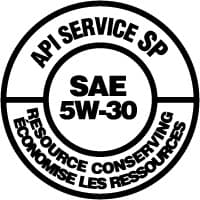
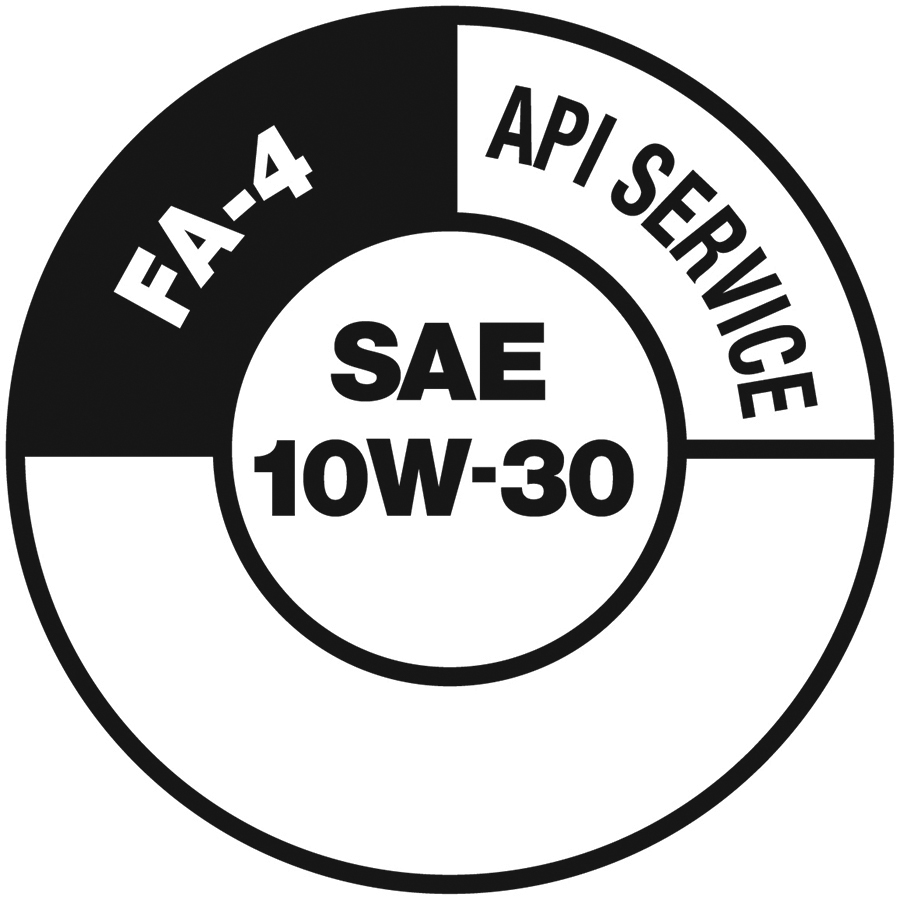
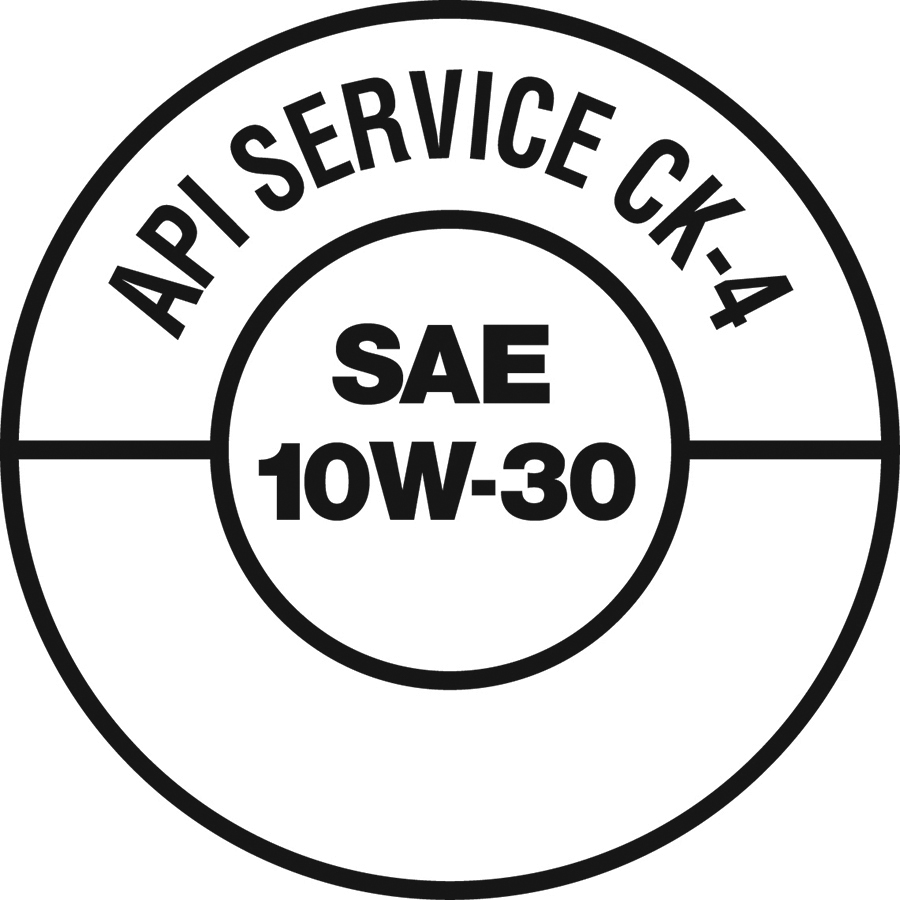
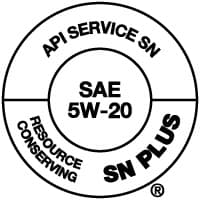
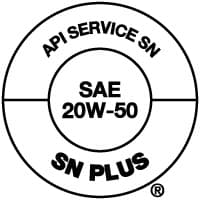
API CERTIFICATION MARK
The API Certification Mark identifies engine oils meeting the International Lubricants Standardization and Advisory Committee (ILSAC) performance requirements and is commonly referred to as “the Starburst”, shown below.
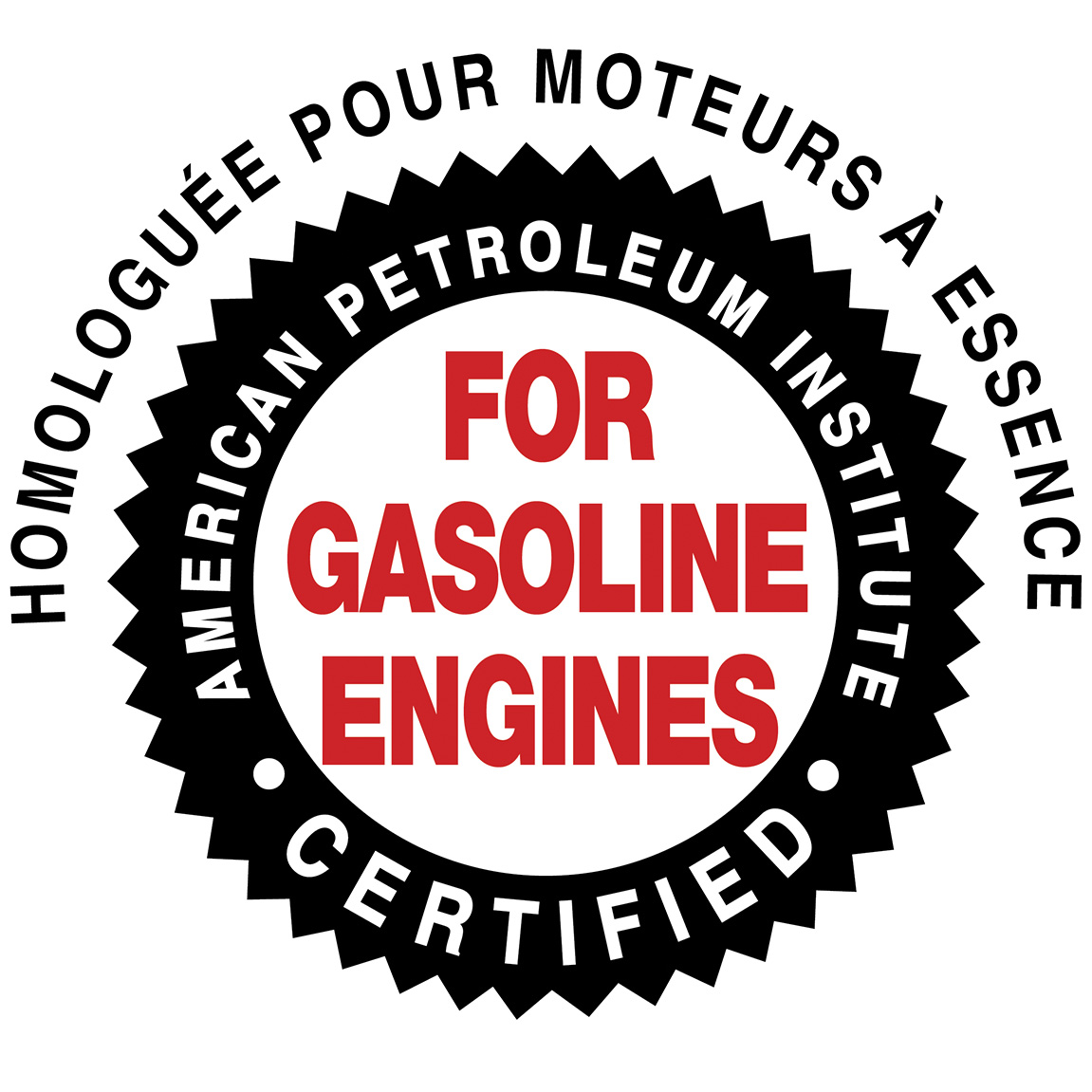
This symbol enables the general public to easily recognize oils which meet the warranty requirements of Chrysler, Ford and the Japanese automakers and must be displayed on the front of the motor oil container. General Motors currently recommends “dexos® 1 Gen 3” product for their more recent gasoline engines. Consult the owner's manual to determine whether the engine requires ILSAC GF-6A/API SP or dexos® 1 Gen 3 approved engine oil.
The current ILSAC specification is ILSAC GF-6 (as of May 2020). The ILSAC GF-6 specification was split into 2 categories, ILSAC GF-6A and ILSAC GF-6B, each with their own trademarked symbol. The API “Starburst” only applies to SAE 0W-20, 0W-30, 5W-20, 5W-30 and 10W-30 viscosity oils that not only meet the ILSAC GF-6A specification, but also meet and are licensed API SP and the Resource Conserving classification.
API CERTIFICATION MARK “SHIELD”
The Shield certification mark, shown here, is used on the front of containers for SAE 0W-16 products only, that meet ILSAC GF-6B, API SP and the Resource Conserving classification. It is used in place of the Starburst, and can be combined with the API Certification “Donut”.
